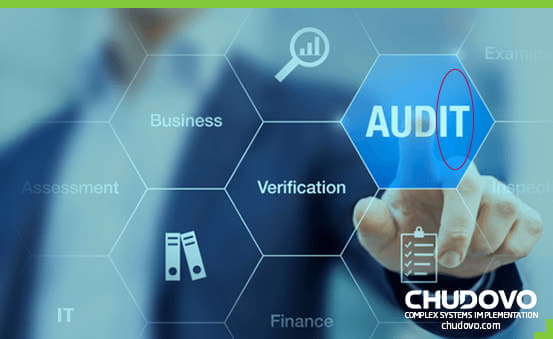The Software Audit: Is Your Business Prepared?
Does your organization carry out software audits? If not, then you’re missing out on its long-term benefits, such as saving time and cost. Software audits enable teams to learn about software quality and how it adheres to regulations, plans, and organization goals.
In this blog post, we focus on how you can use software audits to improve operational efficiency, security, compliance, and licensing.
Let’s get started.
Table of content
What is a Software Audit?
Software audit is a comprehensive technical process where an external or internal auditor checks software quality and its adherence to regulations, standards, and plans.
To get a neutral review, most organizations opt for external or independent auditors with the sole purpose of identifying issues, mitigating risks, and providing solutions. Internal software audits are also effective if carried out impartially.
By the end of the software audit process, teams get a software audit report that contains information clarifying the following:
- Does the software meet legal requirements?
- Does the software meet licensing compliance?
- Understanding who and how often the software is used.
- Monitoring quality assurance (QA)
- Does the software comply with industry standards?
As stated, a good software audit report contains solutions or hints on how to solve new-found problems related to policies, regulations, and licenses.
Why Does Your Business Need it?
Any software-based company must carry out software audits from time to time (either internally or externally). However, critical infrastructure-based software such as airline solutions, banking solutions, weather forecasts, or healthcare providers must carry out audits as they directly impact end-users well-being.
Software audits are great for gaining insight, finding problems, and fixing them. It helps remove expired or unnecessary inactive licenses. If done right, software audits help mitigate regulatory or licensing issues before they become an issue. Experienced external auditors can help identify compliance gaps that might be beyond the capabilities of internal auditors.
Generally, teams must carry out internal audits frequently, with external audits carried out quarterly to ensure unbiased reporting when it comes to licensing, compliance, and safety.
The best approach is to conduct an internal audit before opting for an external audit. This approach lets you understand organizational needs and fix issues before experts further audit the system. If your team lacks the necessary in-house expertise, it is wise to go for an external software audit.
Internal audits are best for:
- Learning if there are any piracy violations by ensuring that valid licenses are installed on machines.
- Learning the software used, like how often it is used or who is using it?
- Monitoring software QA
- Verifying licensing compliance
But what about the frequency of audits?
It depends on various factors, including the team’s confidence in their software. For example, a well-oiled software company may want to do annual audits, whereas complex or critical solutions must opt for monthly or quarterly audits.
New companies or companies with recent growth may also want to carry out software audits to ensure optimal performance without worrying about violations, legal actions, and penalties.
What are the benefits of Software Audit?
To truly understand software audit, you must know its impact as well. Below are some of the software audit benefits.
Discontinue tools/software not in use
Over time, it is common for enterprises to use tools only to leave them suspended once their need is complete. The management is clueless about them until they run software audits and find tools that are no longer needed. The worst part is that the organizations are still paying for them.
Companies can get rid of unwanted licenses and associated fees by doing software audits periodically.
Make improvements across the board
Software audit helps remove unnecessary licenses and make improvements across the board. This includes but is not limited to adding new tools and updating existing subscription plans, or customizing the tool based on the business needs.
Alongside, teams must also focus on security by closing any loopholes. It’ll protect them against data breaches.
Improved licensing management
License management is crucial for optimal operations. It ensures legal issues prevention and compliance gaps with a clear understanding of what’s in use and what needs to go.
The software audit team must go through all software license contracts and see how they can use them to their benefit. One such software audit example includes the ability to cancel a contract once the tool is no longer in use.
Finding and fixing code and design problems
Software audits can give you insights on how to improve the code and design of your app/solution. It is common for managers to rank their projects highly, especially in terms of usability and code quality. However, auditors and specialists with knowledge of industry standards can unearthen issues that need attention for overall improvement. It can help development teams to change processes to ensure higher-quality output.
Improving business process efficiency
Businesses need constant process improvement if they need to survive in a highly competitive market. Software audit lets you do that by allowing managers to learn about processes and how they can be improved critically. With a clear understanding of metrics, teams can identify performance gaps and optimize operations.
It also helps managers create and nourish a healthy working culture. If done correctly, it can lead to financial savings and operational and performance improvements.
Cost Savings
One of the biggest software audit benefits is cost savings. It improves design and code quality, ensuring long-term benefits and resulting in cost savings.

What are the Types of Software Audits?
Organizations order software audit services when they face challenges and look for ways to solve them. Each organization selects the type of software audit needed for the business at the current point of time. For example, it is reasonable to order a code review service to enhance the quality of the product code or software development process in general. In turn, a security audit focuses on the security aspects of the software.
Let’s look at them below.
License compliance audit
License compliance audits ensure intended software license usage. There are instances where companies don’t even know if they are breaking the licensing terms. They install multiple software copies to their systems with a single license, breaking the contract.
To resolve this, companies must do a complete license compliance audit. They should then buy the licenses if needed.
Code review
Code review audits focus on making the source code free from security vulnerabilities. A group of experts focus on finding the best approach where they guide on steps to improve coding standards.
Security audit
If a company doesn’t have a security expert, they must carry out a security audit. This protects the organization’s intellectual property and mitigates data leaks.
Architecture Inspection
In architecture inspection, the auditors aim to improve the overall system’s scalability, security, and flexibility.
The key steps they follow include:
- Learn how the system works by studying the architecture
- Find out the loopholes and document them.
- Create a detailed audit report with recommendations.
Infrastructure inspection audit
In the infrastructure inspection audit, the audit team focuses on the underlying network, hardware, and server components.
By doing so, they evaluate the infrastructure’s reliability, performance, and security by ensuring optimal resource utilization and scalability. Furthermore, the audit reports provide disaster recovery plans.
Apart from functional-based software audit types, there are also broader software audit classifications, which include internal audit, external audit, and compliance audit.
Additionally, you must also know about:
- External hard audit
It is carried out by external auditors (with the right to audit), such as vendors, to validate contract clauses. If clauses are found broken, the company needs to pay a fine.
- External soft audit
External soft audits are carried out by external auditors such as partners or publishers. It aligns with assessments with no legal repercussions, helping organizations focus on improving business processes and, eventually, sales.
- Internal hard audit
The internal hard audit is done by the internal risk team or skilled auditors to evaluate risk management.
- Internal soft audit
A dress rehearsal for teams to know what to do when an actual external hard audit takes place.
There are also other types of software audits, including
- Performance audit
It helps evaluate software performance for improved scalability and responsiveness.
- Vendor audit
The vendor assesses the compliance and performance reliability that is provided to the organization.
- Maintainability audit
Auditors check and estimate the common software maintainability. In other words, they check how easy the software maintenance and updating process is.
- Usability and accessibility audit
Within the scope of this audit are executed checks for verifying accessibility & usability for different types of users.

Certified engineers
Convenient rates
Fast start
Profitable conditions
Agreement with
EU company
English and German
speaking engineers
Software Audit Participants, Preparations Steps, Audit Plan
In this section, we’ll broadly take a look at how to carry out a software audit.
Software audits are complex enough to warrant proper planning and execution. If your organization is aiming to get audited or gets requests from software vendors or publishers for audit, then you must know the steps to follow.
In this section, we’ll look at the steps for audit preparation, the steps for performing a software audit, and what to expect once the software audit is completed.
In any successful audit, the key players include:
- Initiator of the audit/auditor
Software vendor or software publisher aiming to do the audit. The audit team includes organizational representatives, managers, and customers. For internal audits, the audit team is assigned by the organization. In both internal and external audits, audit personnel must be chosen. The auditor carried out the steps mentioned in the audit plan while documenting observations and recommending corrective measures.
- Audited organization
The organization that is currently undergoing an audit. They provide all the necessary information to the auditors required to carry out the audit successfully.
- Recorder
The recorder takes care of the audit team’s recommendations and documents them.
Software Audit Preparation Steps
Organizations must prepare for software audits beforehand to improve the overall process. The key preparation steps include:
- Use effective software asset management(SAM) tools to manage and budget software. A good SAM tool will help you document everything correctly and give you insight into overspending, license shortages, and unused tools.
- Maintain constant communication with the vendor. It’ll help teams during software audits in the future.
- Keep proper documents to showcase proof of ownership.
- Stay ahead of the curve by conducting regular audits. It’ll improve software code, development process, and business process efficiency and ensure complete license compliance.
How to Audit Software and Audit Plan: The key document
The audit team exclusively depends on the audit plan to carry out the tasks. The audit plan document contains objectives and goals that the audit team is trying to achieve.
Depending on the software audit type, the audit team checks:
- Software development inventory
List of software running on the device.
- Hardware
Any hardware used by the organization.
- Virtualization
Virtual servers and machines running on physical hardware.
- User data
Any user data via Active Directory, which contains remote devices and user information.
During the audit process, the organization vendor and auditors discuss and explain each phase and come up with a scope and timeline. Once done, they move to data collection that matches the audit scope, such as proof of license, software usage data, etc.
After Audit Process
Once the audit is completed, auditors provide recommendations through review meetings with the organization being audited. They mention areas of improvement and potential concerns.
The organization then meets with the vendor and negotiates on how to fix the issues. If the suggestions are internal, such as code enhancement, UI improvement, or bug fixes, then they are conveyed to the appropriate team for implementation.
For successful software auditing, you must hire software audit companies such as Chudovo, offering specialized engineers with software audit certification.
Software Audit Checklist
Below is a handy software audit checklist that you can use for all types of software audits:
- Are there any unauthorized software installations?
- Make sure to double-check licensing terms and update them.
- Ensure that all software/tools have the latest patches, minimizing/eliminating the risk of data leaks or zero-day exploits.
- Make sure that the latest software is compatible with the hardware.
- Check if the software is properly configured and works as intended.
- Double-check for security vulnerabilities.
- Check for compliance gaps and see if there is an open-source alternative.
- Check the long-term impact on users and remove/minimize the use of tools that negatively impact users’ experience.
- Deep dive into software use, ensuring that it is used for intended purposes with no unauthorized modifications.
For software development audits, you must also keep following the software development audit checklist on your radar.
- Check if your software development process follows best practices and meets industry standards.
- Check for intellectual property rights and licensing agreements.
- Make sure that the documentation is up to mark and updated regularly.
- Ensure that the software product is highly maintainable.
- Conduct proper risk analysis to learn about vulnerabilities and risks.
Final Words
Software audits are a necessary evil that only benefits organizations that do them periodically. It helps companies ensure complete compliance with industry standards, license terms, and code standards. However, the real challenge is regularly carrying out software audits. You can set up internal teams or collaborate with external auditors to do the heavy lifting.
That’s where Chudovo development company comes in. With over 18 years of industry experience, we offer software audit services, including ERP audit, directly impacting your business process efficiency, productivity, and legality. We provide development services, app development, web development, security testing, custom development, custom software development, management software development, and cloud services.
Frequently Asked Questions
Why an audit is necessary?
An audit helps identify problems related to software development, licensing, security, compliance, and regulations. It helps organizations save time and money in the long run while improving user experience and satisfaction.
What are IT audits, and why are they important?
Organizations carry out IT audits to improve operational efficiency and security. It makes systems more resilient, scalable, and available.
What is the purpose of computer audit software?
A computer audit software highlights data expectations. Auditors can use the data to create reports and identify issues.
Why is a system audit needed?
A system audit helps companies improve the reliability, relevance, and regulatory compliance of their management systems. It also enhances operational performance and validates organizational objectives.
If you need a qualified software audit, Contact us now!






